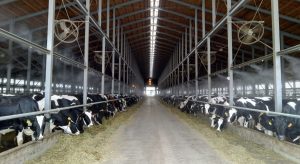Technical Library
- HOME
- Technical Library
- Mist Cooling Keeps Horses Free from Summer Fatigue | Interview with Philipp Farm (Racehorses)
Mist Cooling Keeps Horses Free from Summer Fatigue | Interview with Philipp Farm (Racehorses)

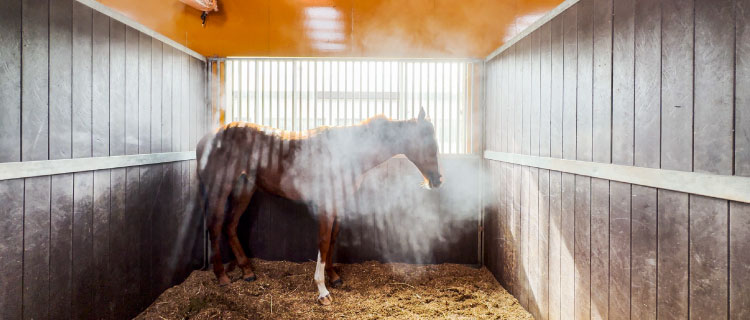
User Introduction:
The following is an interview with Mr. Minori Yamaguchi, President of Philipp Farm Co., Ltd., who shares his experience with the mist cooling system.
Solutions or Products Featured
in This Case Study
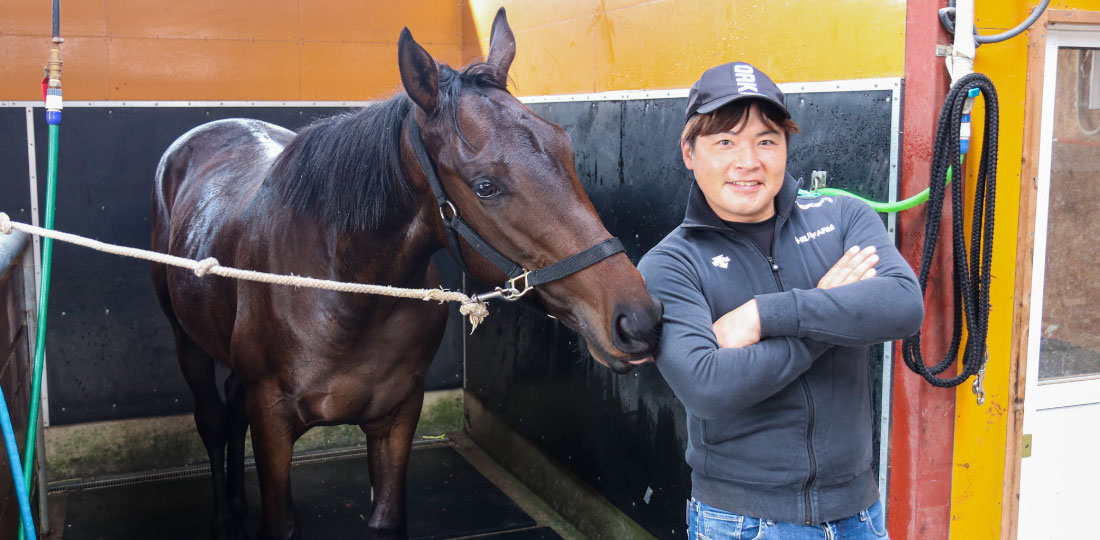
Some horse owners even chose to send their horses here for rest because we had mist cooling installed in the stables.”
The Training Process
All of our horses arrive in the autumn of their yearling year, after being raised freely on breeding farms. From there, we begin breaking them in—helping them get used to human contact, being handled and washed, saddled, and eventually ridden—so they’re ready for racing.
By the early summer of their two-year-old season, we usually send them to off-track stables near racetracks such as Hakodate, Tokyo, or Niigata. If they pass the gate test there, they make their debut in a maiden race. That’s the typical process.
Rising Heat Even in Hokkaido
As you know, Hokkaido’s been getting hotter in recent years—the summer temperatures now are clearly different from ten or twenty years ago. It used to be “cool Hokkaido,” but that’s just not the case anymore. These days, in July and August, it’s not unusual for the daytime temperature to top 30°C. Honestly, it’s hotter than people on Honshu (Main Island of Japan) might think.
That’s a real problem from a training perspective. And on Honshu, a lot of stables already have mist cooling systems. So we decided to put in a mist cooling system too—it’s essential not just for training, but for the horses’ rest.
Don’t Miss the Signs of Summer Fatigue (Heat Stress)
It’s actually pretty easy to spot summer fatigue in horses: darkening around the eyes, swollen legs, and a big drop in feed intake—a horse that normally eats 8 kg/day will only eat about 4 kg. Those are all clear signs of summer fatigue.
And once you start seeing those signs, the problems just keep snowballing. First, when their feed intake drops, they usually don’t bounce back until around autumn, and they can’t stay focused in the meantime. As their body overheats, they sweat more, their internal balance gets thrown off, and their overall condition goes downhill. When that kind of thing piles up day after day, it really takes a toll on their training results.
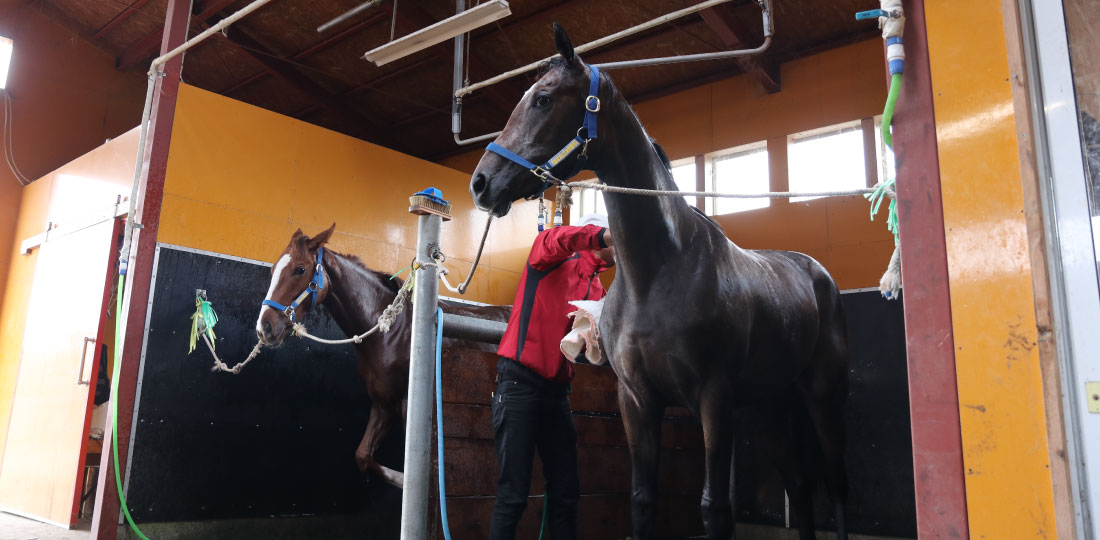
Another Challenge: Transportation
Before racing, the horses we raise are transported to off-track training centers or racetracks. And let me tell you, transportation is a lot more stressful for horses than most people realize. Even just moving them in a specialized horse transport vehicle can cause them to lose 20 to 30 kg from stress and sweating.
So, we can’t just send them at their peak racing weight. We have to account for that expected loss and send them a bit above their racing weight. But if a horse is suffering from summer fatigue, they just won’t eat enough in the first place.
And with race schedules to keep, sometimes we have no choice but to send them even if they’re showing mild signs of fatigue. But then the stress of transport piles on top of that, and their condition drops even further. Honestly, we’d rather not send fatigued horses to the off-track training centers at all.
On top of that, to race, they have to pass the gate test. You’ve got to ask yourself: will the horse go into the gate properly? Can it stand still and wait? Will it burst out when the gate opens? If the horse is still struggling with summer fatigue, it can’t stay focused during practice, and that causes problems.
Accelerating from zero to top speed is already a huge burden on the horse, and they lose even more weight. If they pass the test, they go straight into the race, but if not, they’re sent back to the training center, and the whole cycle of preparation and retesting starts all over again. It just means more burden for everyone, and nothing good comes out of it.
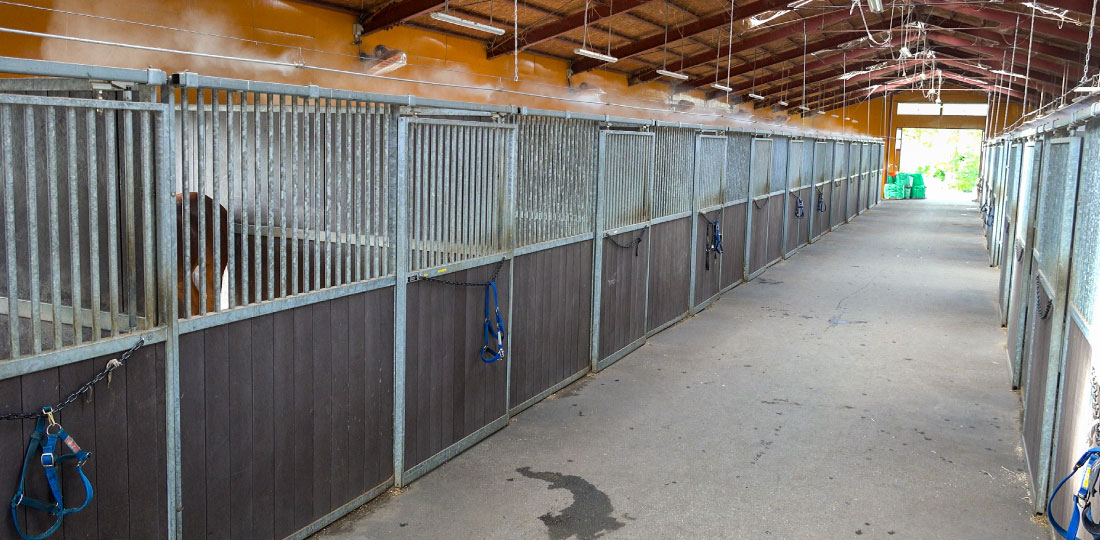
A Dramatic Change with Mist Cooling
Since we put in the mist system, the situation changed dramatically. Even just a 2–3 °C drop was enough to completely get rid of their summer fatigue. The horses eat well, their coats shine, they stay focused during training, and we can keep them at the right weight for transportation. Some owners have even said things like, “Since you’ve got mist cooling, I’d like to leave my horse with you.” That makes me really happy.
Sometimes people ask, “Doesn’t using mist cooling in Hokkaido make the horses feel even hotter when they move to Honshu?” But animals don’t really “get used” to the summer heat. If it’s hot, they get summer fatigue. That’s why it’s so important to take proper heat measures here in Hokkaido too. I believe the best thing for the horses is to give them the very best heat countermeasures we can, right where they are.
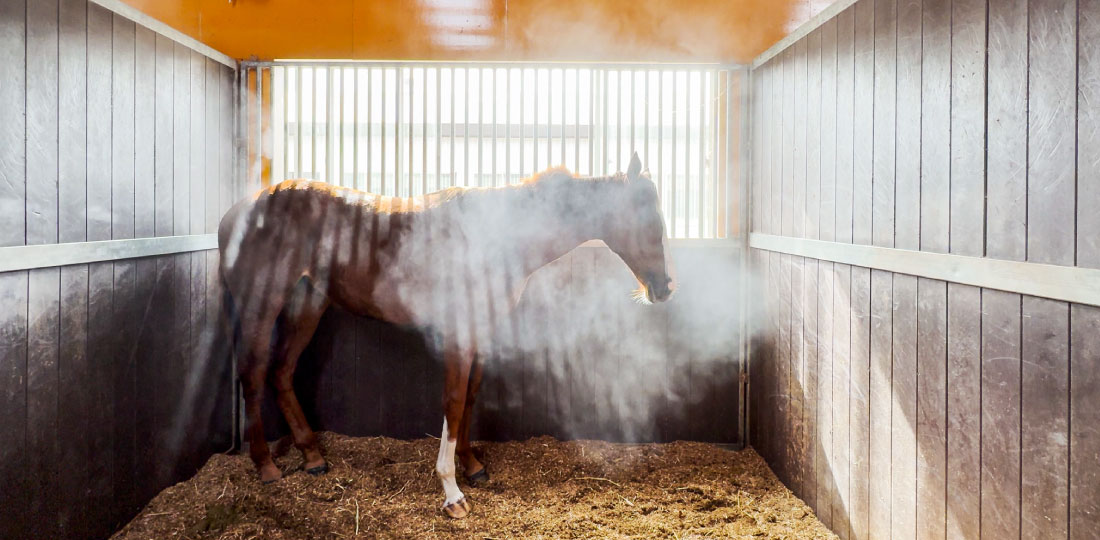
Mist Has Lightened the Load for Staff, Too
In summer, we don’t have quite as many racehorses, so the staff usually has a bit more breathing room.
But when a horse shows summer fatigue, everyone has to give up their days off and stay on constant watch, which is nerve-wracking and exhausting. This summer, though, thanks to the mist cooling, we managed to get through the summer without any problems. I was even able to relax a little and visit Honshu when friendly owners invited me.
We’ve also had a lot of inquiries and visits from nearby training farms curious about our mist system. I think more and more farms are going to start using it from now on.
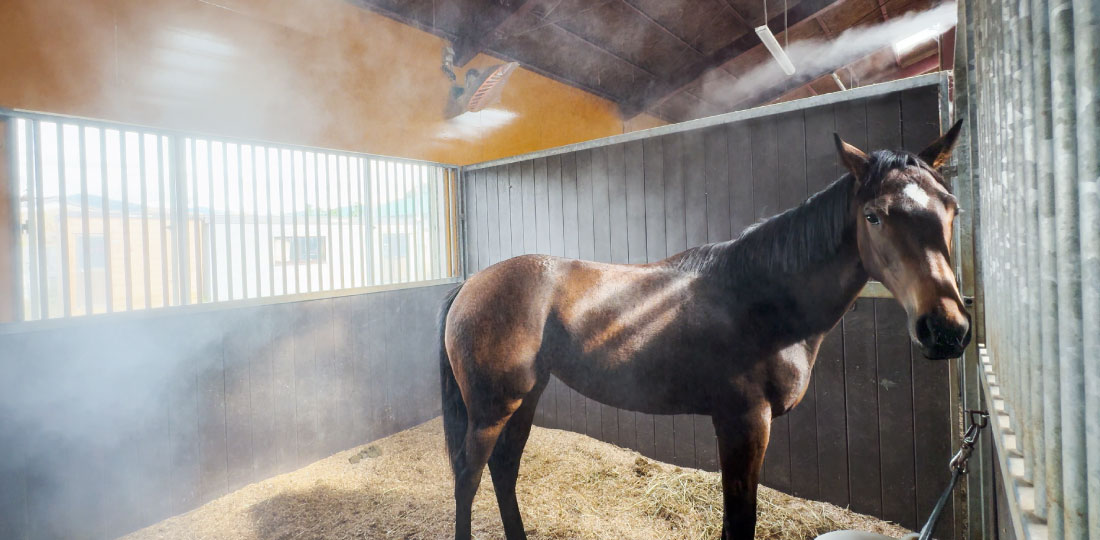
📌Key Results
Here’s a quick look at the outcomes at Philipp Farm with the CoolPescon system:
- Stable temperature lowered by 2–3 °C
- Zero cases of summer fatigue (heat stress) among horses
- Improved feed intake, coat condition, and training focus
- Increased trust from horse owners
These results show that mist cooling with CoolPescon isn’t just about lowering the temperature.
At Philipp Farm, it has become essential for safeguarding horse health, supporting performance, and strengthening trust with horse owners.

